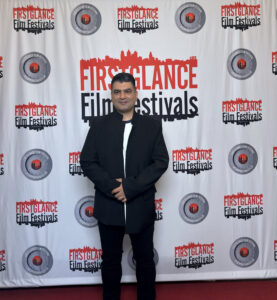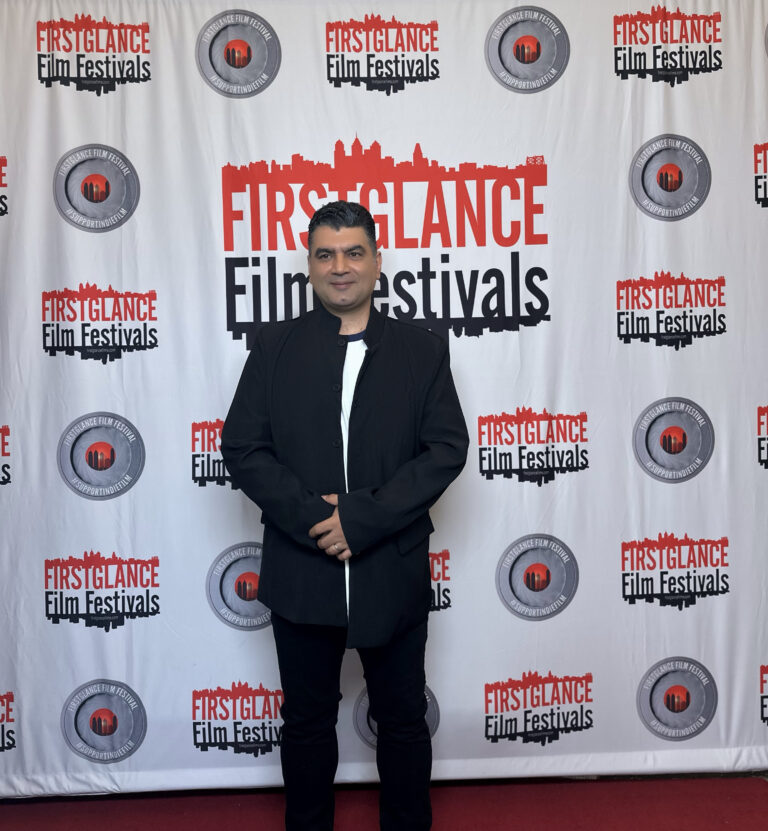This issue interrogates understandings of creative practice in screen production research within the framework of a broad range of activities that includes production and distribution of feature films to documentaries and to experimental audio-visual film genres. Screen production research here also includes enquiry into the education of future film and television professionals. The term ‘screen’ has been popular in Australia for the film and television industries, being adopted as early as 2004 with the creation of the Australian Screen Production, Education and Research Association (ASPERA) and the formation of Screen Australia in 2008. In the United Kingdom, the analogous term ‘filmmaking’ is widely employed. This special issue on Filmmaking and Screen Production Research is a joint project between ASPERA and the Filmmaking Research Network (FRN), funded by the UK Arts and Humanities Research Council. Creative Practice Research in Filmmaking and Screen Production is an anthology which highlights the ongoing work of the FRN and ASPERA, presented here as peer-reviewed research papers and a report, each interrogating issues that are central to both organisations’ activities.
ASPERA has been working with educators and researchers on consolidating screen production research particularly over the last five years in Australia. The ASPERA community has produced more than 50 scholarly traditional outputs since 2014 which have significantly contributed to new knowledge in the field. In addition, the 2017 ASPERA report Screen Production Research Reporting: An ASPERA Scoping Project captures disciplinary challenges regarding creative practice research reporting and evaluation in Australia’s academic landscape. It seeks to assist researchers and research managers to understand how screen production outputs might be evaluated, and subsequently recognised as research outputs. The report highlights findings that environments for creative practice research vary greatly between institutions and outcomes of this mode of research vary greatly across the sector. The report also speaks of the extent to which these differences impact on the practices of screen production researchers. A number have changed their approach to conducting research, while others have found ways to comply with national requirements yet still work on creative practice projects that may not clearly sit within the ‘research’ parameters set by their institution.
A second ASPERA report was released in June 2018. The Measuring Excellence in Screen Production Research report details how ASPERA as a peak body recognises and measures research quality in screen production. It offers guidelines and principles to assist creative practice researchers working in screen production and also those that evaluate this research, and aims to specify levels of excellence in the discipline for an Australian research context. It is intended to promote discussion and debate, anticipating amendments that respond to a community of researchers and evolving research and industry terrains. These reports are available on the ASPERA website (www.aspera.org.au/research/research-resources/).
As a follow-up to the two reports, this special issue offers a research report by Craig Batty, Bettina Frankham, and Marsha Berry of ASPERA’s Research Sub-committee titled Exploring a new era of screen production research: Laying foundations for engagement and impact, which focuses on engagement and impact as increasingly visible and quantified aspects of research. The peer-reviewed report tackles strategies for engagement and impact as discussed at ASPERA’s Screen Production Research Engagement and Impact Symposium, held at University of Technology Sydney in November 2017. The report investigates how screen production researchers might respond to the Australian Research Council’s focus on additionally measuring research through the way it engages with broader society (including industry, Government and community) and the contribution that research makes to the economy, society and environment. This detailed report makes an important contribution to ongoing debates that engage with issues of creative practice as research and methods for assessing its significance to the field.
Researchers Simon Weaving, Sandra Pelzer and Marc Adam shine a light on creating impact through the artistic value of cinematic moments in new research on cinema-going audience testing in The Cinematic Moment: improving audience testing of movies. Their paper presents a new theoretical framework that supports improved test screening processes for filmmakers. The cinematic moment framework is shaped around creative decision-making processes that surround the assembly of narrative material in order for it to have its strongest influence on audiences. The research employs sequence ordering and recall of emotional values tested in a pilot study conducted at the University of Newcastle, Australia, based on a 25-minute narrative film.
Research which resides in the creative decision-making processes of filmmaking is also emphasised in Patrick Kelly’s paper drawing on his PhD thesis, Deconstructing the Detour: A Meld of Theory and Filmic Practice to Generate New Knowledge, in which traditional media technologies are used to make a contemporary feature-length film Detour Off the Superhighway (2013). Using legacy image-making technologies, Kelly uses autoethnographic methods to explore the consequences of going off-line in a modern world. Surprisingly, the findings are focused not on technologies but on the various contexts that enhance the experience of media and how these operate for an individual.
Nick Cope and Tim Howle argue for a practice-led research approach in describing their long-standing collaboration as a filmmaker and musician in Electroacoustic Moviemaking: a creative media practice research collaboration case study. Collaborating since 2002, the pair explore a large body of work that tests how to compose with sound and moving image, treating the sonic and visual as commensurate partners. This paper also explores the cross-disciplinary research outcomes and departmental and institutional research frameworks that enhance the impact and engagement of this research.
With many practitioners of creative practice research working within film schools, it is exciting to see how the academy is experimenting with situating student filmmakers within specific domains and fields to better understand creative content and markets. Increasingly, film schools are focused on teaching creative practice as a research methodology in artefact-based industries. Pieter Aquilia and Susan Kerrigan contribute an examination of the Australian Film, Television and Radio School’s (AFTRS) newly-implemented Master of Arts Screen: Screenwriting curriculum in Re-visioning Screen Production Education through the Lens of Creative Practice: An Australian Film School example. The paper presents a current film school landscape and its focus on educating resilient creative entrepreneurs in the delivery of a new Creative Practice graduate subject in 2017. The embedded case study offers ‘creative practice as research’ as a methodology that has been constructively employed to foster and generate innovation and creative vision as outcomes in a screenwriting curriculum and investigates how this new method has invigorated graduates’ artistic learning journeys.
Understanding and articulating creative processes is crucial for filmmakers entering creative industries following graduation. Catalin Brylla unpacks the role of reflective spectatorship in shaping the creative development of screen documentary. Chronicling teaching practices from the University of South Wales and the University of West London, the research details the delivery of first-year documentary practice courses in The Benefits of Content Analysis for Filmmakers. The paper argues that filmmakers can benefit from drawing on a body of existing spectatorship experience when developing new creative screen works and that there is a potency in framing this as creative practice rather than more traditional academic work. Content analysis of similar work and an interrogation of audience disposition as a research practice is crucial during a film’s development stage and a filmmaker’s analysis can critically inform the narrative and aesthetic conceptualisation of a new work.
The papers in this special issue work towards framing screen production research in the academy and showcase the important role of creative practice as research in industry. Screen production research in the academy is quickly gaining momentum and as a consequence, filmmaking research is increasingly significant to the industrial context that it interrogates. ASPERA continues to host these cross-framework discussions in Australia, and together with the FRN in the UK, this special issue of Studies in Australasian Cinema has been able to consolidate these screen production research debates within a more global context. The issue opens with the question of how to better measure the impact and engagement of creative research within the broader social, economic and cultural aspects of society. It highlights the key role of creative practice as research in the training of young filmmakers through the academy, and how this may flow into the screen industries. It showcases the important collaboration of artists across a range of forms in order to answer specific creative questions about sound and image relevant to the industrial frame. Traditionally, screen impact has been measured through audience engagement, and this issue explores this activity further in the interrelationships of audience and narrative in the ‘cinematic moment.’ This special issue, while only able to emblematically represent a burgeoning field, does promote the importance of sharing these important discoveries between the academy and industry, the importance of continuing to question and test creative practice through research and in doing so encourages a greater synergy between all creative partners in screen production.
















+ There are no comments
Add yours